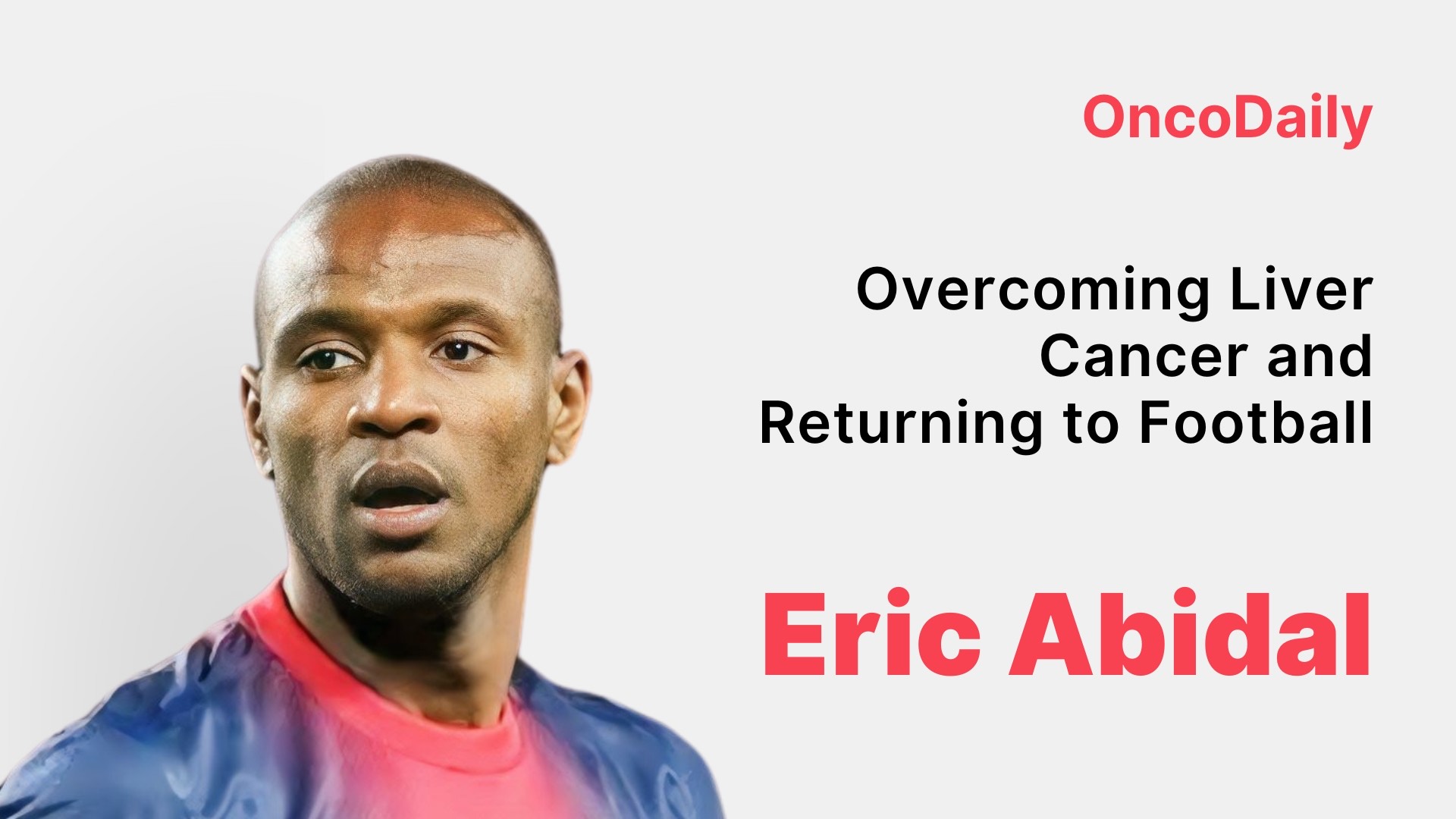Eric Abidal, born in 1979 in France, is a former footballer known for his success with Lyon and FC Barcelona, winning 18 major titles including two Champions League trophies. Diagnosed with a liver tumor in 2011, he underwent surgery and a transplant in 2012, later making a remarkable and inspiring return to football. This article explores his cancer battle, along with key information about liver cancer causes, risk factors, and prevention.
![]()
What Was Eric Abidal’s Initial Reaction to His Liver Cancer Diagnosis?
Eric Abidal’s initial reaction to his liver cancer diagnosis was marked by shock and a determination to maintain a positive outlook. When he informed his teammates he needed surgery, he even joked that he would be back for the following weekend’s game, displaying remarkable mental strength and resilience. Abidal later described the pain and suffering he endured as “unbearable,” and while he tried to encourage his team by sending video messages, some, like Lionel Messi, found it too distressing to watch, as they saw him looking extremely unwell. Despite the emotional and physical toll, Abidal’s attitude reflected the mental fortitude often seen in elite athletes, helping him face the ordeal and ultimately return to football.
What Treatment Did Eric Abidal Undergo for His Liver Tumor?
Eric Abidal’s treatment for his liver cancer began with surgery to remove the tumor in March 2011. However, due to complications and unresolved issues from the initial operation, he underwent a liver transplant in April 2012, with his cousin Gérard serving as the donor.
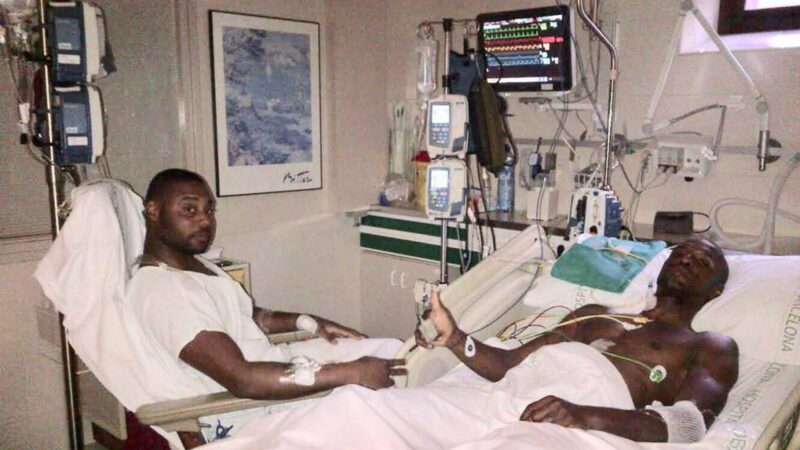
Gerard Armand (left), Abidal’s cousin, was named as the donor of the liver at the time of the operation to save the Barcelona defender’s (right) life.
Support From Family and Friends
Eric Abidal received strong support from family, friends, and teammates throughout his cancer treatment. His cousin Gérard donated the liver for his transplant in 2012, a critical act of family support. Former Barcelona teammate Dani Alves offered part of his liver to help Abidal, demonstrating deep camaraderie and solidarity, though Abidal declined to protect Alves’ career.
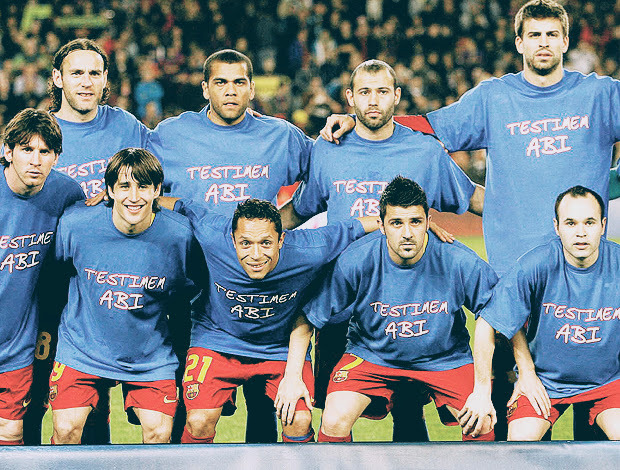
Barcelona teammates and staff showed emotional support, with captain Carles Puyol praising Abidal’s strength and encouraging the team to support him and his family. Thierry Henry’s hospital visit moved Abidal to tears, highlighting the importance of friendship during his battle. Abidal also sent videos and messages to encourage his teammates during treatment, although Lionel Messi asked him to stop as it was emotionally difficult for the players. Overall, Abidal described his teammates as “part of my family” during this challenging period, emphasizing the vital role of his support network in coping with the illness.
Support From Fans or “Animo Abidal”
Eric Abidal received overwhelming support from fans and the football community during his battle with liver cancer and recovery. One of the most iconic moments was the “Ánimo Abidal” campaign, where Barcelona fans at Camp Nou clapped throughout the 22nd minute of a match against Getafe on March 19, 2011, in honor of his jersey number. This show of solidarity was repeated in multiple matches, becoming a powerful expression of unity and encouragement.
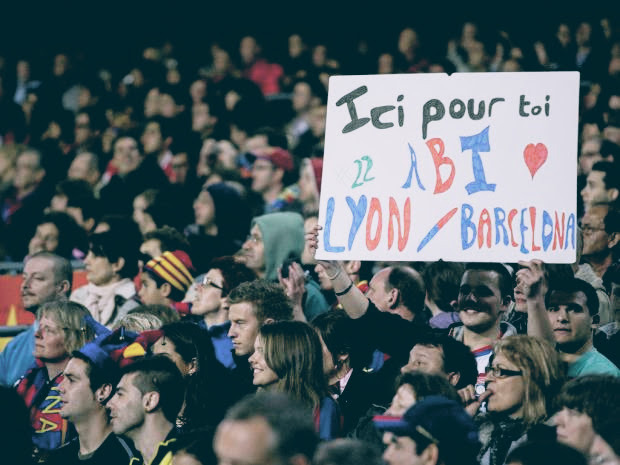
Support extended beyond Barcelona. In a Champions League round-of-16 match, players from both Real Madrid and Lyon wore “Ánimo Abidal” shirts before kickoff, and the message was displayed on the Santiago Bernabéu scoreboards—demonstrating the widespread respect Abidal commanded across rival clubs.
Perhaps the most memorable tribute came during the 2011 UEFA Champions League Final, when Barcelona captain Carles Puyol handed Abidal the captain’s armband, allowing him to lift the trophy first after their victory over Manchester United. It was a deeply symbolic moment of recognition and team solidarity.
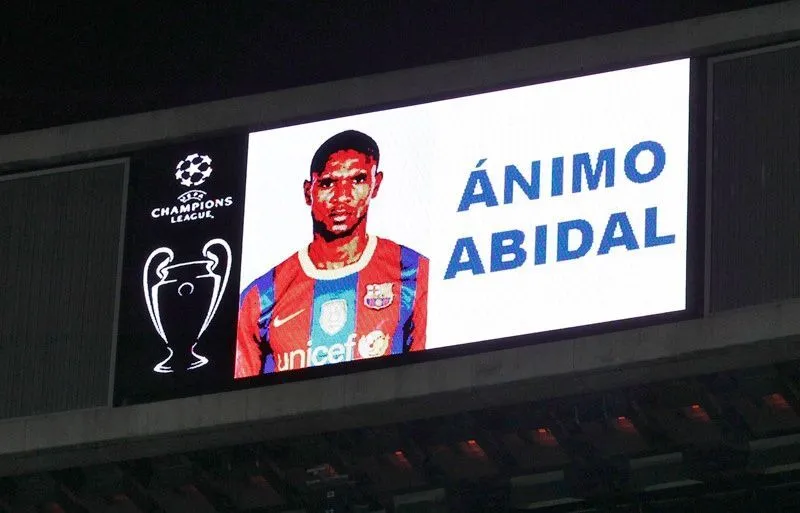
Real Madrid’s tribute to Eric Abidal. PC: Real Madrid Twitter
Fans around the world also took to social media, sharing messages of support and inspiration. Fellow players, coaches, and football personalities echoed their admiration, turning Abidal’s personal struggle into a global story of resilience, unity, and hope.
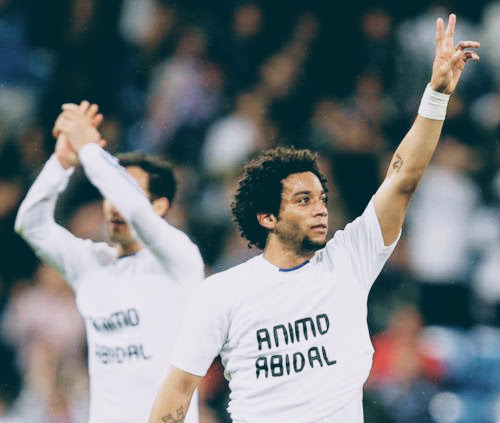
How Did Eric Abidal Make His Return to Football After His Liver Transplant?
After the transplant, Abidal was hospitalized until May 21, 2012, and gradually returned to training by late 2012. He resumed professional football in early 2013, playing his first official match post-transplant in April 2013. Throughout his treatment, he received strong support from teammates, including Dani Alves, who offered part of his liver—a generous offer Abidal declined to protect Alves’ career. Abidal’s journey from tumor removal to transplant and eventual return to top-level football is considered a remarkable example of resilience and medical success.
Eric Abidal Returns to Barcelona
He played his first competitive match back, coming on as a substitute for Gerard Piqué in the 86th minute against RCD Mallorca, playing the final 20 minutes. Following his return, Abidal gradually regained his fitness and match sharpness, eventually starting matches and playing full games again. He contributed to Barcelona’s defense with his usual versatility, playing as a left-back or center-back, demonstrating resilience and determination to perform at the highest level despite his health challenges. His comeback was celebrated as a symbol of courage and hope in football.
Why Did Eric Abidal Choose the Number 22 Shirt?
Eric Abidal chose to wear the number 22 jersey as a tribute to his own career at Barcelona, but notably, his close friend and teammate Dani Alves later wore the number 22 to honor Abidal’s courageous battle with liver cancer. Alves changed to number 22 during the 2014-15 season as a sign of support after Abidal’s illness and transplant, symbolizing solidarity and friendship. Alves had even offered to donate part of his liver to Abidal, which Abidal declined to protect Alves’ health. The number 22 thus became associated with Abidal’s inspiring fight and resilience.
Eric Abidal’s Post-Cancer Career: From Captaincy to Leadership Roles in Football
After his return to professional football in 2013, Eric Abidal rejoined AS Monaco, the club where he began his career, signing a one-year contract with an option to extend. He was immediately appointed team captain and played a key role in helping Monaco secure a spot in the UEFA Champions League during his first season back. He extended his contract for another year but shortly after changed his mind and signed with Greek club Olympiacos in July 2014. At Olympiacos, Abidal played nine games before announcing his retirement from professional football in December 2014, citing personal reasons and recognizing it was time to end his playing career.
Following retirement, Abidal transitioned into football management and administrative roles. In June 2018, he returned to FC Barcelona as the club’s director of football, replacing Roberto Fernández. In this role, he was responsible for overseeing player transfers and squad development. However, his tenure ended in August 2020 after the club’s heavy 8–2 defeat to Bayern Munich in the Champions League quarter-finals.

Beyond his official roles, Abidal has been active as a club ambassador, participating in charity events and representing Barcelona’s values worldwide. His post-playing career reflects continued leadership and influence within football, leveraging his experience and resilience from his playing days and health battles.
Eric Abidal’s Commitment to Cancer Awareness and Healthcare Advocacy
Eric Abidal’s advocacy and collaboration with health organizations have been both concrete and impactful, particularly through his own foundation and strategic partnerships. In 2013, he established the Eric Abidal Foundation, which is dedicated to supporting individuals battling cancer—especially children—while also promoting cancer awareness, research, and the use of sport as a tool for healing and integration. The foundation has been active in numerous initiatives aimed at improving the lives of patients and their families.
Through collaborations with organizations such as the Swiss watch brand Zenith, the foundation has raised significant funds for projects benefiting children with cancer, allowing it to expand its reach and impact. In 2019, Abidal was recognized alongside Jordi Cardoner at the Peace & Sport Awards for their Robot Pol project, which promotes peace and social inclusion through sport.
Beyond institutional efforts, Abidal has used his personal journey to raise public awareness about cancer. By sharing his experience openly, he has inspired millions around the world, emphasizing resilience, hope, and the importance of early detection and support networks. In addition to health advocacy, the Eric Abidal Foundation is also committed to education and social inclusion, developing projects that empower underprivileged communities and reflect a broader dedication to societal well-being.
You Can Also Read Why does Lionel Messi Donate So Much to Charity? by OncoDaily

What Cause Liver Cancer?
Liver cancer is primarily caused by factors that lead to chronic liver damage, inflammation, and cirrhosis, all of which increase the likelihood of malignant transformation in liver cells. One of the leading causes worldwide is chronic infection with hepatitis B (HBV) or hepatitis C (HCV) viruses, which together account for approximately 80% of hepatocellular carcinoma (HCC) cases. These viral infections cause persistent liver inflammation and fibrosis, ultimately leading to cirrhosis and genetic mutations that promote cancer development.
Cirrhosis itself—regardless of its cause—is a major risk factor for liver cancer. It often results from chronic alcohol abuse, long-term viral hepatitis, or inherited metabolic disorders. Alcohol-induced liver cirrhosis, particularly when combined with viral hepatitis, significantly increases cancer risk.
Environmental factors such as exposure to aflatoxins also play a role. Aflatoxins are toxins produced by fungi that can contaminate food items like grains and peanuts, particularly in parts of Africa and Asia. Long-term ingestion of aflatoxins can cause mutations in critical genes like p53, contributing to liver cancer development.
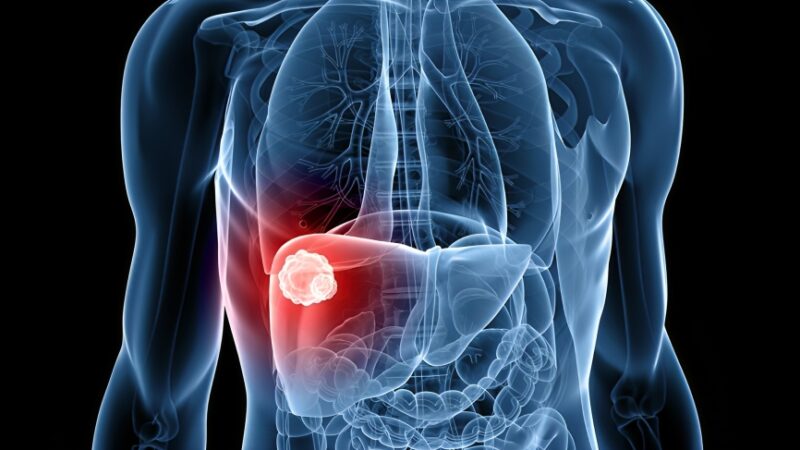
Non-alcoholic fatty liver disease (NAFLD) and its progressive form, metabolic dysfunction-associated steatotic liver disease (MASLD), are increasingly common causes of liver damage due to rising rates of obesity, diabetes, and metabolic syndrome. These conditions can lead to liver inflammation, fibrosis, and eventually cirrhosis and cancer.
Additional risk factors include smoking, excess body weight, type 2 diabetes, rare inherited disorders like hemochromatosis and alpha-1 antitrypsin deficiency, and co-infections with HIV. Ultimately, the accumulation of genetic mutations in liver cells—often triggered by these underlying conditions—disrupts normal cellular regulation and leads to tumor formation.
You Can Also Watch How Blue Faery Is Changing the Fight Against Liver Cancer by Oncodaily
What Are the Benefits and Challenges of Liver Transplantation?
Liver transplantation offers life-saving benefits for patients with end-stage liver disease but also involves significant challenges. It is the most effective treatment for advanced liver failure, with survival rates around 93% at one year and 83% at five years. Most recipients experience improved quality of life, returning to normal activities such as work, travel, and family life. Living donor transplants further enhance outcomes through better organ availability and faster recovery.
However, the procedure carries major risks. As a complex surgery, it poses complications like bleeding, infections, and graft rejection. Immunosuppressive medications, essential to prevent rejection, increase susceptibility to infections and long-term side effects such as diabetes, kidney damage, and heightened cancer risk. Graft-related complications—such as bile duct issues and vascular problems—may require additional interventions or retransplantation.
Limited donor organ availability restricts access, and although living donor transplants help, they carry risks for donors. Underlying liver diseases, like hepatitis C, may recur post-transplant. Postoperative complications and sarcopenia also impact outcomes.
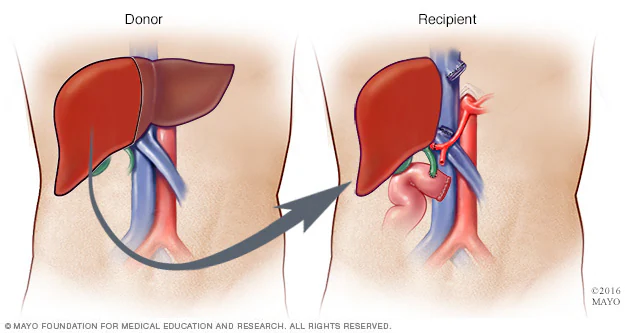
In summary, liver transplantation greatly improves survival and quality of life, but demands careful patient selection, skilled surgery, and ongoing post-transplant care to manage its risks.
Who Can Be a Liver Transplant Donor for Me?
A liver transplant donor can be either a deceased donor or a living donor. If you are considering a living donor, here are the key criteria and requirements for someone to be a suitable liver donor for you.
Age is typically between 18 and 60 years old, though some centers may accept donors up to age 65. The donor must be in good physical and mental health without significant medical conditions such as liver disease, diabetes, heart, kidney, or lung disease, cancer, HIV, or uncontrolled high blood pressure. A body mass index (BMI) of 32 or below is usually required. The liver must be healthy, with no history of liver disease, hepatitis, or substance abuse.
- Type O donors can donate to anyone (universal donors)
- Type A donors can donate to A and AB recipients
- – Type B donors can donate to B and AB recipients
- – Type AB donors can donate only to AB recipients
The decision to donate must be voluntary, without pressure or compensation. Donors must not have ongoing substance abuse and must undergo a psychological evaluation to ensure they are prepared for the surgery and recovery process.
The evaluation includes blood tests, imaging like CT scans, and consultations with medical specialists to confirm that donation is safe for both donor and recipient. Living donor liver transplantation is possible because the liver has the ability to regenerate. A portion of the donor’s liver is transplanted, and both the donor’s and recipient’s livers regrow to normal size over time.
In summary, a suitable liver donor for you is a healthy adult, usually aged 18 to 60, with a compatible blood type, no major health issues, and a willingness to donate voluntarily. Family members, close friends, or even altruistic strangers may be considered if they meet all required medical and psychological criteria.
How to Prevent Liver Cancer?
To prevent liver cancer, the most effective strategies focus on reducing exposure to its main risk factors. Preventing hepatitis C (HCV) infection is crucial, as there is no vaccine. Infection can be avoided by not sharing needles, practicing safe sex, and ensuring sterile conditions for tattoos or piercings. Screening and antiviral treatments can cure many cases of HCV, significantly lowering liver cancer risk.
Limiting or avoiding alcohol consumption is also important, as excessive drinking can cause liver cirrhosis, a major contributor to liver cancer. Quitting smoking reduces the risk of liver and other cancers. Maintaining a healthy weight and managing conditions like obesity, diabetes, and fatty liver disease through balanced nutrition, regular exercise, and proper control of blood sugar and cholesterol can help prevent liver damage that may lead to cancer.
Avoiding exposure to aflatoxins—harmful toxins from fungi in improperly stored grains—and other dangerous chemicals is essential. Proper food storage and regulation minimize these risks. Regular testing and treatment for chronic hepatitis C, as well as practicing safe medical and personal hygiene (such as using sterile needles), can also help prevent the progression of liver disease to cancer.
You Can Also Read Randy Moss and Bile Duct Cancer: How He Went Against, How He Survived, and More by Oncodaily

Does the Hepatitis B Vaccine Prevent Liver Cancer?
Yes, the hepatitis B (HBV) vaccine effectively prevents liver cancer by protecting against chronic hepatitis B virus infection, which is a major cause of liver cancer worldwide. Chronic HBV infection can lead to liver cirrhosis and hepatocellular carcinoma (HCC), a primary form of liver cancer. The HBV vaccine is considered the first vaccine to prevent a type of cancer by stopping infection with a cancer-causing virus.
Evidence from universal vaccination programs, such as the one launched in Taiwan in 1984, shows a dramatic reduction in HBV infection rates and a significant decrease in liver cancer incidence, especially in children and young adults. Studies estimate that widespread HBV vaccination can prevent up to 72–90% of hepatitis B-related liver cancer cases. Increasing global vaccination coverage and preventing mother-to-child transmission are key to maximizing this cancer prevention effect.
Health authorities like the CDC recommend hepatitis B vaccination for all infants, children, and adults up to age 59, as well as older adults at risk. While there is no vaccine for hepatitis C, preventing HBV infection through vaccination is a proven and powerful tool to reduce liver cancer risk worldwide.
In summary, liver cancer prevention centers on infection control, healthy lifestyle choices, and early detection and treatment of liver disease to prevent cirrhosis and malignant transformation.
Written by Aharon Tsaturyan MD
FAQ
What type of cancer did Eric Abidal have?
Eric Abidal was diagnosed with a cancerous tumor in his liver, specifically liver cancer, which required surgery and eventually a liver transplant.
When was Eric Abidal diagnosed and treated for cancer?
He was diagnosed in March 2011, underwent surgery to remove the tumor shortly after, and then had a liver transplant in April 2012 due to complications from the tumor.
Who donated the liver for Eric Abidal’s transplant?
His cousin Gérard was the liver donor for the transplant in 2012.
Did any of Eric Abidal’s teammates offer to help during his illness?
Yes, former Barcelona teammate Dani Alves offered to donate part of his liver to Abidal, but Abidal declined to protect Alves’ career.
How did Eric Abidal’s cancer affect his football career?
Despite the illness and transplant, Abidal made a remarkable return to professional football in April 2013, playing again for Barcelona before retiring in 2014.
How did Abidal cope emotionally and mentally with his cancer?
Abidal has spoken about the struggle of living with cancer, saying football helped him fight day by day. He also shared that teammates and family support were crucial, though some teammates, like Lionel Messi, found updates on his condition emotionally difficult
Was Eric Abidal involved in an illegal organ transplant or organ trafficking scandal?
Eric Abidal faced allegations and investigations regarding irregularities in his 2012 liver transplant. Some reports questioned the legitimacy of the donor relationship with his supposed cousin Gérard, and former Barcelona president Sandro Rosell was also implicated in alleged illegal organ purchase claims. Both Abidal and Barcelona denied any wrongdoing, and official investigations found no evidence of illegal activity. However, the controversy attracted significant media attention and legal scrutiny
What are the symptoms of liver cancer?
Common symptoms include fatigue, jaundice (yellowing of the skin or eyes), pain or discomfort in the upper right abdomen, easy bruising or bleeding, unexplained weight loss, nausea, and abdominal swelling. Early stages often have no symptoms, so screening is important for at-risk individuals.
How can liver cancer be prevented?
Prevention focuses on reducing risk factors such as chronic hepatitis B and C infections (through vaccination and treatment), avoiding excessive alcohol use, maintaining a healthy weight, avoiding exposure to aflatoxins, and managing metabolic diseases. Vaccination against hepatitis B is especially important.
How is liver cancer detected and diagnosed?
Detection involves routine screening for at-risk patients using imaging tests like ultrasound, CT scans, or MRI, along with blood tests to assess liver function. Diagnosis is confirmed through imaging and sometimes biopsy. Early detection improves treatment outcomes
Is the hepatitis B vaccine safe?
Yes, the hepatitis B vaccine is very safe and effective. It does not contain live virus or blood products, so you cannot get hepatitis B from the vaccine. Common side effects are mild, such as soreness or redness at the injection site.
How many doses of the hepatitis B vaccine do I need?
The vaccine is usually given as a series of three shots over six months, though some newer vaccines require only two doses one month apart. Completing the full series is important for lifelong protection.
What if I miss a dose or delay the vaccine series?
You do not need to restart the series if doses are missed. The next dose should be given as soon as possible, and the remaining doses spaced appropriately. Delays do not reduce protection if the series is completed
